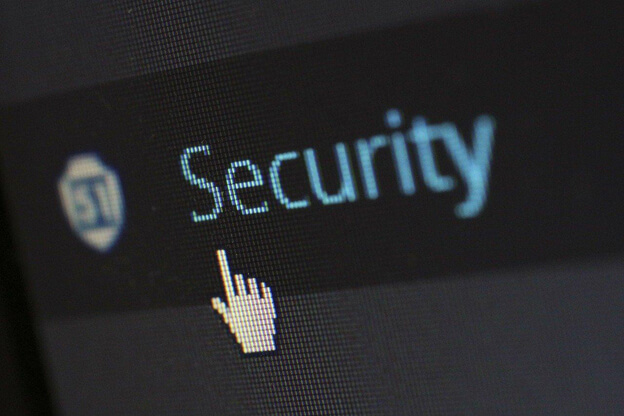10 Common Security Vulnerabilities in Commercial Buildings
When it comes to protecting your business, most people think about locks, cameras, and maybe a security guard or two. But the reality is, even the most high-tech systems can fall short if common security vulnerabilities go unnoticed.
At Max Security, we specialize in commercial security in Denver, and we’ve seen firsthand how small oversights can lead to major security gaps. Whether you’re operating a warehouse, office complex, retail storefront, or mixed-use facility, understanding these vulnerabilities is the first step toward a stronger, smarter security strategy.
Let’s dive into ten of the most common security weaknesses found in commercial buildings, and what you can do about them.
1. Unsecured Entry Points
The most obvious place to start is often the most overlooked. Unsecured doors, propped open exits, and poorly maintained locks are major risk factors. These can include service entrances, delivery doors, loading docks, or emergency exits that employees routinely use for convenience.
Solution: Make sure all entry points are properly secured with commercial-grade locks and reinforced frames. Install security cameras to monitor entrances and track any suspicious activity. If a door should only be used in emergencies, make sure it stays that way with alarms and push bar systems.
2. Lack of Surveillance Coverage
It’s not enough to install a few cameras around the front entrance and call it a day. Many businesses miss blind spots or fail to place cameras in key areas like parking lots, elevators, stairwells, and warehouse aisles. Worse yet, some cameras are outdated, disconnected, or never checked.
Solution: Perform a full security audit to map out areas with high traffic or vulnerability. A modern camera system with remote monitoring, high-resolution imaging, and night vision makes a big difference. Businesses looking to improve commercial security in Denver often start with an updated surveillance plan that leaves no area unmonitored.
3. Poor Lighting Around the Property
A surprising number of break-ins occur not because of high-tech hacks, but simply because a criminal found a dark corner to operate unnoticed. Parking lots, alleys, side entrances, and loading zones are all high-risk areas that need proper lighting.
Solution: Install motion-activated floodlights or dusk-to-dawn lighting around the perimeter of your building. A well-lit property is one of the most effective deterrents for unwanted activity.
4. Outdated or Inadequate Alarm Systems
Older alarm systems may not integrate with modern surveillance equipment or offer features like mobile alerts, glass break sensors, or panic buttons. In some cases, they might not even work properly anymore, especially if they haven’t been tested recently.
Solution: Upgrade to a smart commercial security system that can be monitored remotely and integrates all elements, such as alarms, cameras, motion sensors, and more. Modern systems can alert building managers or local authorities immediately when a breach occurs, reducing response time.
5. Overreliance on Manual Processes
Human error is one of the biggest threats to building security. If your team relies solely on staff to lock up, check badges, or monitor entrances, you’re leaving your business vulnerable. People forget. They get tired. And sometimes they get complacent.
Solution: Automate wherever possible. Use key card systems, biometric readers, and automated lock schedules to reduce dependency on memory and human vigilance. For businesses in Denver, this is an especially valuable move when dealing with high turnover or 24/7 operations.
6. Failure to Monitor Security Systems in Real Time
Many commercial buildings have cameras or alarm systems but never actively monitor them. This means incidents are only discovered after the fact, when it’s too late to respond.
Solution: Consider using a professional monitoring service or setting up real-time alerts that notify your team immediately when suspicious activity occurs. Proactive monitoring not only deters crime but also ensures faster response times when an incident happens.
7. No Visitor Management Protocol
Visitors, whether they’re clients, vendors, or delivery personnel, can easily become security liabilities without proper oversight. Allowing people to roam freely inside your building without ID badges or escorts can be a major risk.
Solution: Implement a visitor check-in process that includes name badges, sign-in logs, and notification systems for employees being visited. Better yet, integrate a digital visitor management system that logs entries, takes photos, and alerts staff automatically.
8. Vulnerable Perimeters and Landscaping
Believe it or not, your landscaping choices can impact your building’s security. Overgrown bushes near windows, trees that provide rooftop access, or fencing gaps can give intruders places to hide or points of entry.
Solution: Keep shrubs and greenery trimmed and use strategic landscaping to improve visibility. Install fencing or bollards where appropriate and make sure parking areas are clearly defined and monitored. For commercial security in Denver, this is especially important in high-traffic or urban areas where external threats are more common.
9. Lax Cybersecurity in Physical Systems
In today’s connected world, your building’s security is only as strong as your network. Many security systems now run on Wi-Fi or cloud-connected platforms, making them susceptible to cyberattacks if not properly secured.
Solution: Work with a provider that understands both physical and cyber threats. Change default passwords on all network-connected devices, ensure software is regularly updated, and consider placing security systems on a separate, encrypted network.
10. Lack of Emergency Planning
Security is not just about preventing crime. It also involves responding quickly when something goes wrong. If your team doesn’t have a clear plan for emergencies like break-ins, fires, active threats, or power outages, your risk multiplies significantly.
Solution: Develop and regularly rehearse emergency procedures. This includes evacuation plans, lockdown protocols, emergency contact lists, and backup communication systems. Assign security roles to key staff members and ensure all employees know how to respond in a crisis.
Final Thoughts
Addressing vulnerabilities in your commercial building isn’t just about avoiding theft. It’s about creating a safe, productive environment for your team, your customers, and your business as a whole. With the right systems, protocols, and provider in place, security becomes less of a daily worry and more of a long-term asset.
At Max Security, we take a customized approach to commercial security in Denver, offering tailored solutions that fit the unique layout and operations of your property. From advanced surveillance to professional alarm monitoring, we help businesses build layered security that doesn’t leave anything to chance.
If you’re ready to identify and address vulnerabilities in your building, our team is here to help. Let’s make sure your commercial property is not only protected but proactively secured for the future.



